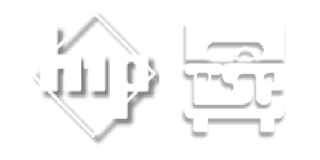INCONCEIVABLE
You keep using the word generator. I do not think it means what you think it means.
Whenever someone tells me they are a hazardous waste generator, I think of the movie, The Princess Bride. The villain, Vizzini (Wallace Shawn) constantly bested, repeatedly retorts with the word “ inconceivable”. Finally, Inigo Montoya,(Mandy Patinkin), says to him, “You keep using that word, I do not think it means what you think it means”.
That is because, the word Hazardous waste “generator” really means a hazardous waste “treatment storage disposal facility operator” who is under “conditions for exemption” from having a Treatment Storage Disposal Facility, (TSDF) permit under the Environmental Protection Agency in 40 CFR Part 262.1.
However, the worst part is most don’t realize when they do not mark their hazardous waste containers with the words “hazardous waste”, “an indication of the hazard”, (ie: “ignitable”) and the dates of accumulation, in their storage areas, they have failed to meet three of the exceptions in 40 CFR Sections 262.16 and 262.17, which exempts them from maintaining a TSDF permit.
Then the real trouble begins, because while Washington State Department of Ecology, Hazardous Waste & Toxics Reduction Program, might not issue you a fine for those three transgressions, they could claim that you have failed to meet one or more of the exceptions that all generators must meet if they do not want to maintain a TSDF permit.
Which would mean you, if you have not figured it out yet, or have not read the November 28, 2016 federal register final rule preamble, https://www.epa.gov/hwgenerators/final-rule-hazardous-waste-generator-improvements , could be cited for operating a “non permitted” treatment storage disposal facility
Effective April 28th, 2019, Washington hazardous waste generators will find themselves under the Department of Ecology, Hazardous Waste & Toxics Reduction Program requirements and interpretations when they are amended.
The most important thing to remember about these new requirements is that the “conditions of an exception” are requirements only for hazardous waste generators who do not want to apply for a TSDF permit and, that the “independent requirements” are for all hazardous waste generators whether they apply for a TSDF permit or not.
I have no doubt, you are meeting current Washington State requirements for hazardous waste determination and recordkeeping, satellite and central accumulation areas and facility and waste storage unit closures, at this time. But, within the next few weeks Washington’s Department of Ecology, Hazardous Waste & Toxics Reduction Program will be adopting changes and clarifications to these under the federal Hazardous Waste Generator Improvements Rule.
Both large and small quantity generators are currently required to mark their containers in the central and satellite accumulation areas with the words “hazardous waste”, in addition to the date each satellite accumulation container is filled and the date central storage begins.
But then, under the new rule generators will have to add an “indication of the hazards” of the contents. For example, the name of the waste (ie: ignitable), a Department of Transportation hazard class label or placard, or a hazard warning or pictogram from the OSHA GHS Hazard Communication Requirements. You should be aware that Washington State is also going to be giving an exception to the labeling size of small hazardous waste containers.
The new rules should also clarify the additional pre-transportation marking requirements for containers to include their waste codes before they are allowed to be shipped off site.
You should also be prepared to meet the Washington State Department of Ecology large quantity generator facility and hazardous waste storage unit clean closure requirements. To certify that each facility, once closed and each on-site storage unit when closed, is “clean-closed” properly. Failure to do so may trigger them to be managed as landfills, which, among other nightmares, might entail groundwater monitoring requirements.
Then, not least and not last, the state will be required to beef up the Preparedness, Prevention and Emergency Procedure Plans, by adding new requirements for documenting what arrangements were made with authorities (local hospitals, police departments and fire and rescue units) or at the very least, documentation of the attempts, that were made by the generator.
Also, the next time a Washington State large quantity generator writes a new or updates their required Contingency Plan, they must also prepare and make available, a quick reference guide that summarizes the contingency plan, including: the types and amounts of hazardous waste on their property at any one time, any special medical treatments or facilities that might be required, a map of the facility, the surrounding area and nearby fire hydrants.
This quick reference guide would also be required to include the name and contact information for your sites emergency coordinator.
And don’t worry just remember, it is not a “faux pas” to use the word “generator”, only not to understand it’s true meaning.
Hope to see you in my upcoming seminars in Washington. In the meantime, check out the Washington State Department of Ecology, Hazardous Waste & Toxics Reduction Program: https://ecology.wa.gov/Regulations-Permits/Laws-rules-rulemaking/Closed-rulemaking/WAC-173-303-Feb17 and the below individual state information sheet. If you still have any questions call (610) 683-6721 or e-mail me at rjkeegan@hazmat-tsp.com.
Thank you for your readership and support.
Robert J. Keegan
Publisher and President
Hazardous Materials Publishing Company
Washington State Information Sheet
HWGIR adopted January 28, 2019 must comply April 28, 2019
Link to updates made so far in 2019 by WA State Dept. of Ecology:
https://fortress.wa.gov/ecy/publications/documents/1904005.pdf
Link to graph with Federal Updates comparing to what WA State applied:
https://fortress.wa.gov/ecy/publications/documents/1804019.pdf
Link to a webinar on WA State dangerous waste rule changes:
https://www.youtube.com/watch?v=27Y1CvthZNg
Contact Washington State Department of Ecology
Phone- 360-407-6700
Online- https://ecology.wa.gov/
specifically: https://ecology.wa.gov/Waste-Toxics

